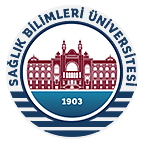ABSTRACT
The importance of genetic studies is great in the diagnosis and planning of the treatment of acute myeloblastic leukemia. Risk analysis should absolutely be performed according to the findings of genetic studies at the stage of diagnosis. Examination of the peripheral blood smear demonstrated 90% blast in a 49-year-old male patient investigated because of leukocytosis, thrombocytopenia and anemia. Results of the flow cytometric analysis were CD13 85.0%, CD33 35.1%, CD34 85.0%, CD117 87.7%, myeloperoxidase 22.8%, HLA-DR 89.0%, CD3 6.6%, CD15 2.2% and CD19 1.0%. The diagnosis of the patient was “Acute myeloid leukemia without differentiation (M0)” according to the French-American-British (FAB) classification. Genetic tests revealed the coexistence of trisomy 8, trisomy 9 and trisomy 21. The ultimate diagnosis of the patient was “Acute myeloid leukemia with myelodysplasia-related changes” according to the World Health Organization (WHO) classification published in 2008. The coexistence of the trisomy 8, trisomy 9 and trisomy 21 in our patient has not been published before, and the presence of complex karyotypic abnormality made the clinical course of the disease poorer. The response to chemotherapy was poor in our patient and he expired two months after the initial diagnosis. As a conclusion, presence of the genetic abnormalities is very important in the diagnosis of acute leukemia, and determines the appropriate treatment on the basis of risk group.



